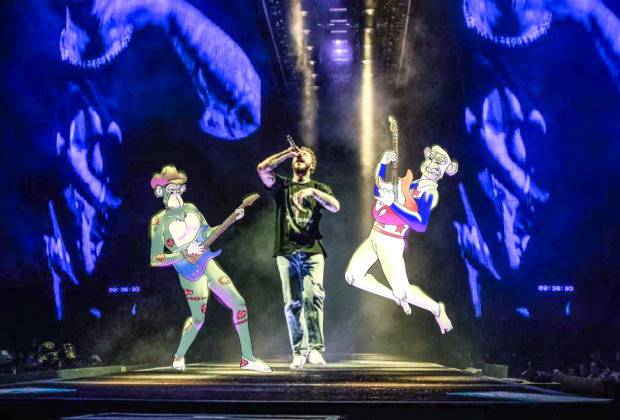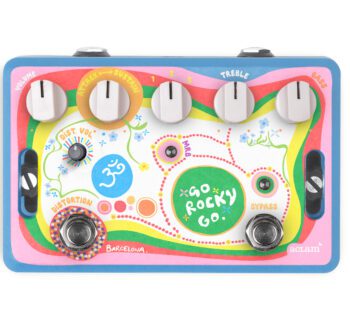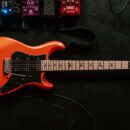Throughout the past five or so years, non-fungible tokens (NFTs) have increasingly become one of the most popular and transformative innovations in virtually every consumer market that has since come to utilize them. NFTs inherently serve as a new class of digital assets that can be created, bought, sold, and traded on blockchain marketplaces such as Opensea using cryptocurrency. Furthermore, because each individual NFT minted comes with a unique signature integrated into its digital file, this grants consumers the ability to verify not only their chain of ownership across the blockchain, but also the authenticity of each separate NFT.
Since the virtual advent of NFTs in late 2017, the demand for this new digital asset class’s integration has ballooned across numerous consumer markets within the broader art trade and gaming industries, to name just a few examples. This surge in the popularity of NFTs has since transcended into additional industries and related consumer markets, especially those pertaining to content creators in the multimedia and greater entertainment industry, as the ability to produce content that acts as NFTs allows them the ability to earn greater value from the images, videos, songs, and other content they produce.
For musicians and musical artists, in particular, the broader utilization of NFTs offers numerous potential benefits to create value in perpetuity by allowing them to only sell the songs or other assets they mint into NFTs. This strategy, in turn, also opens an avenue for them to generate royalties in perpetuity whenever their NFTs are traded, sold, bought, and/or used by a third-party consumer or end-user through a decentralized blockchain marketplace.
Current NFT uses
In June of 2017, the digital art world was upturned virtually overnight (pun fully intended) with the introduction of CryptoPunks—a collection of 10,000 unique pixelated characters created by Canadian software developers John Watkinson and Matt Hall. Each of these individual “punks” is its own NFT, meaning that each punk is inherently rare and exclusive in its ownership, which can be traced on the blockchain, verifying its unique value and authenticity. Because some CryptoPunks possess “types” that make them rarer than others, this has led some of them to be traded for upwards of $500 million, creating immense value for not only their creators, but also the real-world individuals who buy and sell them on the blockchain.
Shortly after the launch of CryptoPunks began to make waves in media headlines, the adoption of NFTs made their way into the gaming industry through two major projects: CryptoKitties and My Crypto Heroes. Because both of these games were built upon existing blockchain technology as decentralized applications, or Dapps, their integration of NFTs allowed for players to create real-world value from acquiring and subsequently selling (or trading) the in-game assets serving as NFTs they obtained from simply playing these titles. In fact, CryptoKittes became so popular after its launch that the amount of NFT transactions resulting from its popularity temporarily crashed Ethereum’s blockchain network.
NFTs are not limited merely to art or gaming, though. Even the NBA has officially jumped aboard the hype through the launch of its Top Shop Marketplace, which some NFT collectors and traders may view as similar to the sports card trading craze of decades past. With NFTs making global headlines so consistently throughout 2021, their continued adoption and use have piqued the interest of musicians looking to capitalize on the capability to mint their music as NFTs for sale and trade on the blockchain.
Future uses for streaming and downloading NFTs
Over the past decade, musicians have been able to generate massive amounts of followers, fans, and listeners online thanks to the introduction of digital music streaming and downloading platforms such as Soundcloud and Spotify. While these platforms grant musicians access to millions (if not, billions) of ears their music otherwise wouldn’t reach, allowing them to essentially build careers entirely online, they have come under fire in recent years for their inability to properly pay musicians royalties for the streams and downloads their songs receive.
However, with NFTs, those issues could soon be all but alleviated. In releasing single songs, entire albums, or even concert tickets as NFTs, musicians may soon be able to regain not only control over the value of their music as it is released, but also its value over time.
“The best thing about…NFTs in general is we go direct to the fans,” Canadian rock vocalist Raine Maida told Spectrum News 1 in an interview last December. “You remove all those middle layers, which has always been a hindrance to creators, whether it's distributing, monetizing, and also community building,” Maida added.
Should a greater portion of musicians follow Maida’s adoption and integration of NFTs in their music, it’s possible that the nature of streaming or downloading music could shift to one focused on providing value in perpetuity to musicians, both from the initial release of their content acting as NFTs as well as the appreciation in the value of that content over time. Additionally, it could be possible for future generations of fans and listeners to also share in the appreciation of real-world value generated by the continued use and sale of songs, albums, or even memorabilia minted from artists as NFTs. This latter point could prove especially true with the introduction of the digital Metaverse.
The transferability of NFTs in the Metaverse
Futurists have long debated what the evolution of life may look like in a hyper-digital world. With talks of the Metaverse now making waves across global media cycles, that future may be closer than we realized.
At its core, the Metaverse aims to serve as a virtual hub where consumers, content creators, and businesses alike can store all their digital assets—including NFTs. With the integration of blockchain technology into the Metaverse, it almost goes without saying that the Metaverse could potentially serve as a “one-stop-shop” for the buying and selling of NFTs, including songs, albums, or other content released by musicians. And because NFTs (and blockchain technology) is inherently decentralized, it brings ownership privileges that have traditionally only been available to the wealthy to the general public.
For instance, while many may not be able to afford to spend the cash needed for a weekend at Coachella or a full week at Burning Man, the cost for attending these festivals’ virtual counterparts in the Metaverse could be made more affordable through the value of NFTs. Let’s imagine that a virtual ticket to either event in the Metaverse serves as an NFT. That NFT can then be traded for another, generating real-world value for not only the purchaser and seller, but also the artists on those tickets.
The end result of NFTs, regardless of industry or market, is one of appreciating value. By allowing greater portions of musicians and fans alike to share in that appreciation via NFT ownership and trade, real-world value is created in perpetuity—even within the Metaverse.•
Written by Nicholas Donarski, Founder — ORE Sys, LLC
Nick Donarski is the technical expert behind ORE Sys, LLC, and the inventor of the multi-part ecosystem that is the ORE System comprised of the ORE Token, the ORE Forge, and the ORE SDK. Holding multiple certifications including MCSE+S, MCSA+S, MCSE, MCSA, MCP, and CEH, Nick is a cyber security expert and has been a featured speaker at multiple cybersecurity conferences and worked for some of the biggest names in the industry. He is fluent in numerous programming languages and blockchain technologies including Web3, Ethereum, Polygon, Binance, BSC, and Smart Contract Security and Testing. Nick is a “gamer” at heart with a passion to create games for users and help developers realize their dreams. The suite of tools within the ORE Ecosystem is the means to that end.














